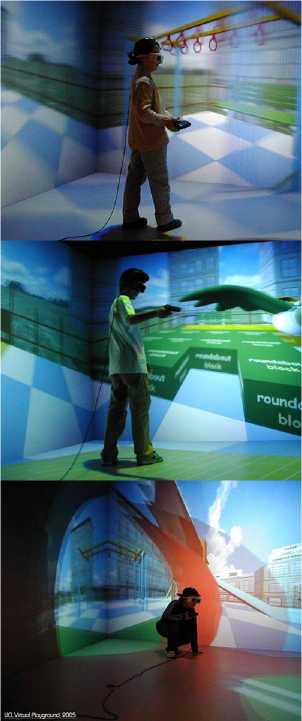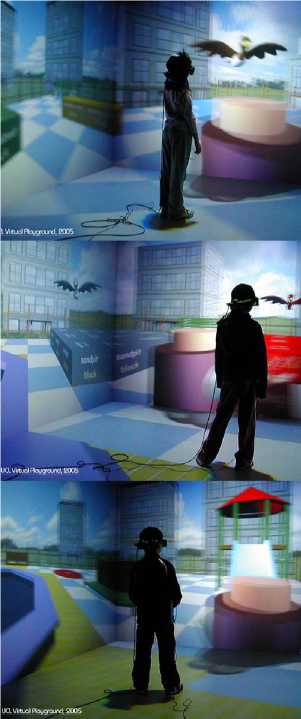brought to the virtual reality laboratory on a weekend) prevented us from
achieving an equal number of boys and girls in each condition, although an
equal number was achieved overall.

Figure 5. Images of children participating in the Virtual Playground studies, in
the two experimental conditions: interactive VR condition (left column) and
passive VR condition (right column).

The nature of the study was such that the student was free to act or interact for
as long as she wished with the playground, be it the virtual or the non-virtual
(LEGO) playground. A researcher who was at the same time the interviewer
and the observer was constantly present, encouraging the participant to
explain her/his actions while doing (by thinking aloud).
If assigned to the interactive VR experimental condition, the participant was
immersed in a typical CAVE-like system2. The participant viewed the
projected stereoscopic images by wearing a pair of active stereo glasses and
could move around freely to interact with the environment by using a wireless
wand which contains a joystick and buttons. The wand was used to navigate
2 Consisting of four projection surfaces (three walls and the floor)
14
More intriguing information
1. Heavy Hero or Digital Dummy: multimodal player-avatar relations in FINAL FANTASY 72. Enterpreneurship and problems of specialists training in Ukraine
3. Unemployment in an Interdependent World
4. Language discrimination by human newborns and by cotton-top tamarin monkeys
5. Globalization, Divergence and Stagnation
6. Word Sense Disambiguation by Web Mining for Word Co-occurrence Probabilities
7. WP 1 - The first part-time economy in the world. Does it work?
8. The Impact of Financial Openness on Economic Integration: Evidence from the Europe and the Cis
9. The name is absent
10. PACKAGING: A KEY ELEMENT IN ADDED VALUE